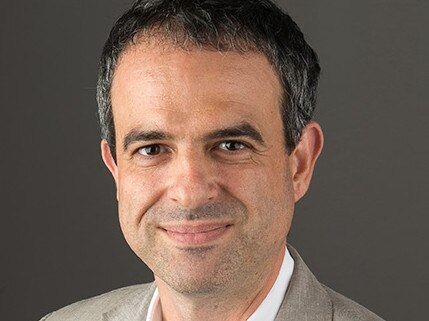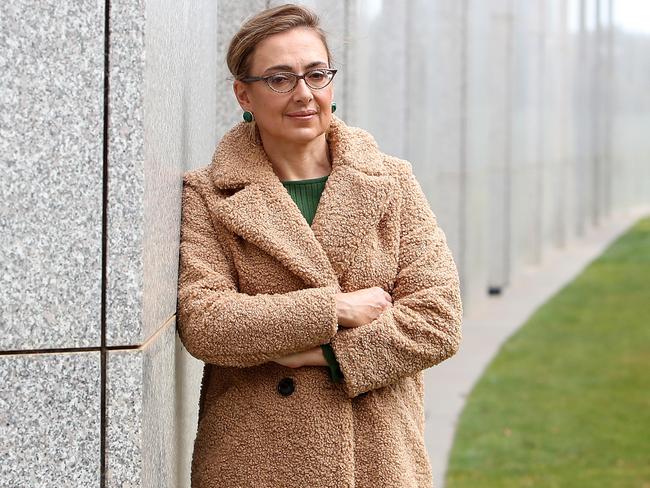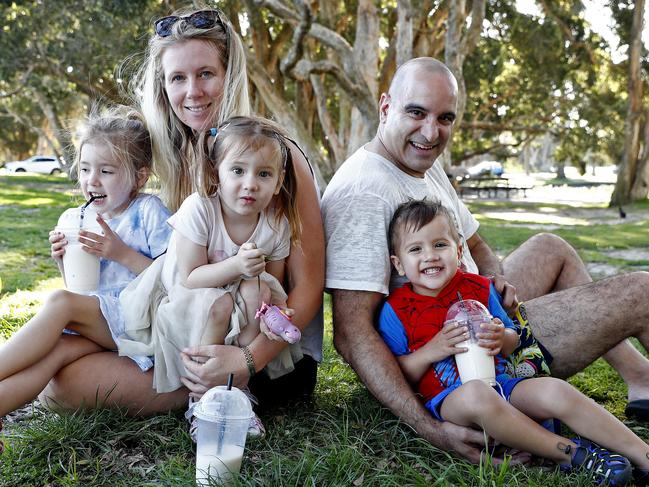Australia’s stingiest and most generous health funds revealed
Australians have reacted to new data showing which health funds are the stingiest on fees for the same procedure. SEE THE LIST & IF YOU’VE BEEN RIPPED OFF
Health
Don't miss out on the headlines from Health. Followed categories will be added to My News.
Exclusive: Australians have reacted to new data showing which health funds are the stingiest on fees for the same procedure.
The analysis contained in the Australian Medical Association’s latest report card on private health insurers shows NIB shortchanges its members the most.
It charges the highest premiums of all the major funds for its Gold hospital cover — almost $1500 more a year than Medibank, Bupa and HCF — yet pays out less for procedures.
In the case of an uncomplicated birth, NIB members fare $572 worse than the most generous fund HBF.
That was one of 12 common procedures where the fund dubiously triumphed as the lowest payer.
On the flip side, Australian Health Service Alliance members — made up of 27 funds including Defence Health, Australian Unity, GMHBA and Teacher’s Health — paid the most generous rebates.

These funds had the highest rebates for eight of the 19 services assessed by the AMA.
The rebate breakdown comes days ahead of planned health fund premium rises — which could deliver hikes of up to $400 a year for members with top cover.
Health funds delayed their annual April 1 rises because of COVID-19 but their October 1 jump will instead leave members facing two premium increases in six months.
All funds are lifting their premiums except HBF, health.com.au, AIA and TUH who will delay the rise until 2021.
News Corp readers said health funds were losing members because of their associated costs being too high.
One wrote: “Memberships are dropping because the funds are pricing them out of the range of ordinary workers. I will be stopping mine as soon as I retire in 4 years. Won’t be able to afford it on a pension.”
Another said: “Private health insurance is a sham. A total sham”, while others stated: “They are all ripping us off. Dodgy fine print, Dr restrictions, no coverage for seeing a specialist. Health insurance has become an expensive rort. People are dropping out everywhere because they don’t see value for money. Deregulation has ruined the insurance industry across the board. Not only in the health sector.”
Analysis by health insurance comparison site iSelect found that the planned 2.92 per cent average increase would result in premiums rising on average by $127 to $4476 for families, couples by $140 to $4920 and singles by $59 to $2073.
AMA president Dr Omar Khorshid said the premium rises are likely to see even more people giving up their insurance, at a time when the public hospital system is under increased pressure.
“As premiums increase, they price out of the market those who are least able to afford it, including large numbers of younger Australians, and families,” Dr Khorshid said.
“Unless the drift away from private health insurance is stopped, we will see even more pressure on an already stressed public hospital system.”
The AMA report card also reveals the level of health fund rebates varies wildly depending on which state you live in.
Health fund Bupa pays $347 more for a knee replacement in Victoria than it does for the same procedure in NSW/ACT, Queensland, Western Australia and Tasmania.
It pays $264 more for the delivery of a baby in NSW than it does in Tasmania.
Medical gap fees faced by health fund members also vary by state suggesting it could be cheaper for patients to hop on a plane and travel interstate for their surgery.
Bupa members are more likely to face gap fees in NSW (10.4 per cent have a gap) than Victoria (6.7 per cent have a gap) and South Australia (4.7 per cent have a gap).
Medibank members in the ACT are more likely to face a gap fee (16.8 per cent) than Victorians (7.1 per cent).
The AMA report also found management fees charged by health funds have almost doubled at some funds since 2010. Every dollar spent on these fees means less is spent on covering surgery costs.
Of the top five funds Medibank and Bupa have the cheapest management fees, while HBF has the highest.
In response to findings NIB members receive some of the lowest rebates, CEO Mark Fitzgibbon pointed to the fund’s “effective” MediGap arrangement.
He said NIB’s Clinical Partners orthopaedic program ensured members avoided potential out of pockets expenses for hip or knee replacement surgery, saving on average $1200 in out of pocket expenses.

“Nine times out of 10 NIB members will not pay an out of pocket expense for eligible MediGap items when they are treated by a medical specialist, highlighting the effectiveness of our no gap “MediGap” arrangement,” he said.
Dr Khorshid said private health fund membership was continuing to decline and further reforms were needed to combat the likely financial impact from the COVID-19 pandemic.
The AMA recently released its Prescription for Private Health, outlining the changes it believes are necessary to reverse the slump in health fund membership.
“We called for comprehensive reforms to premium rebates, lifetime health cover loadings, the Medicare surcharge levy, youth discounts, long-term incentives for people to maintain their cover, and a minimum level of benefits for patients,” Dr Khorshid said.
DIRE FINANCIAL DISTRESS
Half the nation’s private health funds will soon be in such dire financial distress that some will not survive the COVID-19 pandemic, the peak industry body representing the funds has warned.
More than 30,000 people dumped their health cover in the 12 months to June, with health fund profits halved.
Last year the financial regulator predicted only three of the nation’s 38 health funds would survive past 2022, with warnings some funds may be forced to merge in order to survive.
“About half the funds will be in financial distress in the sector unless something changes, unless we get some sense from the federal government that help us control costs,” Private Healthcare Australia chief Dr Rachel David told News Corp Australia.
“The likelihood of all funds, pulling through this period is very low,” Dr David said.
She said industry regulator would have to step in to organise mergers between at risk health funds with larger more profitable insurers.

Health funds are in a dangerous death spiral as young people quit while people in their 70s are gaming the system by waiting until they need surgery before they join and driving up premiums.
Someone who waits until they are 70 to join a fund can save hundreds of thousands of dollars in premium payments over their lifetime.
While copping a $3700 penalty for joining late, they are able to claim up to $40,000 in surgery costs.
Doctors and health funds are crying out for the government to announce major reforms to the sector in the October budget including raising the penalty payment for late joiners.
Dr David said action must be taken to reduce the impact of ballooning medical device costs which have added $1000 to the price of hip and knee replacements.
Rules that allow public hospitals to pressure people to charge their health funds for treatment they are entitled to for free under Medicare should be tightened to save funds another $1 billion, she said.
Other changes would see health funds able to cover treatment that occurred outside hospitals where treating someone in their own home rather than a high cost hospital beds could save money.
Members Health Fund Alliance chief Matthew Koce said the government must raise the subsidy it provides for health fund membership back to 30 per cent of the premium cost. Federal Government cutbacks have seen the rebate shrink to cover just 25 per cent of premium bills.
The federal government has already simplified health fund policies into four new categories and slashed the price health funds have to pay for medical devices like hip and knee replacements but premiums are continuing to rise by two to three times the inflation rate.
“The Federal Government’s Gold, Silver, Bronze, and Basic reforms have been in full force since April this year, but they have not reversed the trend or changed the underlying numbers,” Australian Medical Association president Dr Khorshid said.
“It is time for more reform. It is time for the Government to stop underfunding the public and private health systems, time to stop making ‘savings’ at the expense of quality health care, and time to focus on fixing the system,” he said.
PROS AND CONS
The Galvin family of five, who have recently moved from Sydney to Umina Beach on the NSW Central Coast, are weighing up the pros and cons of their rising insurance plan.
“It’s $268 a month but two weeks ago they said it would be going up to $280 a month for the family ($3360 a year),” Mieke Galvin said.
“A couple of hundred a month is a lot of money. It just keeps rising. It’s annoying. You’re better off paying for those services when you need them.

“I know people that don’t earn that much money who have recently got rid of it, because they just can’t afford it.”
Mieke’s husband Neil Galvin said they claimed two pairs of glasses each year, two dental check ups and a discount on physio.
“It’s not much. But to me, I see it as paying for something we hopefully won’t have to use. It’s a safety net – especially if the kids were to get sick,” Mr Galvin said.
Originally published as Australia’s stingiest and most generous health funds revealed



